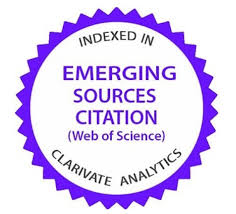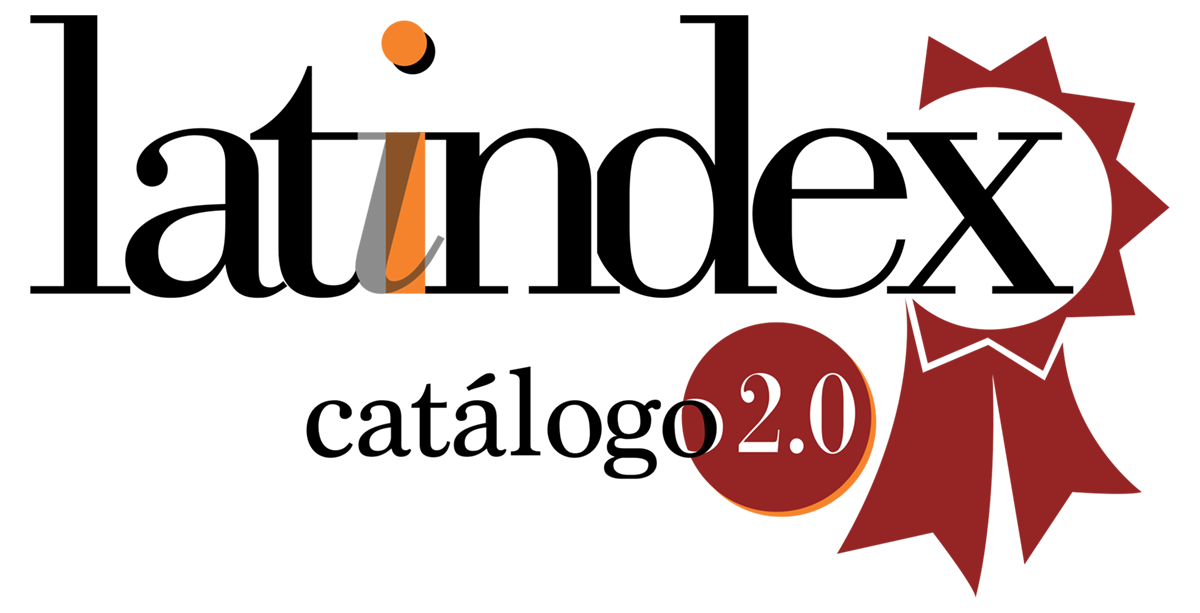Live blogs can’t handle the truth? A contemporary cross-cultural consideration of transparency and procedural justice
DOI:
https://doi.org/10.35295/osls.iisl/0000-0000-0000-1402Palabras clave:
blogs en directo, justicia abierta, profesionales del derecho, transparencia, justicia procesalResumen
La información de los juicios mediante blogs en directo para informar continuamente a los lectores sobre los acontecimientos de la sala se ha convertido rápidamente en una parte establecida de la vida jurídica y a menudo se asume que cumple las exigencias de una justicia abierta. Sin embargo, en la actualidad se echa en falta una comprensión sociojurídica profunda de cómo los profesionales del Derecho perciben que los blogs en directo afectan a la justicia procesal, así como una comprensión profunda de lo que significa la transparencia para los profesionales del Derecho. Dado que un conocimiento más detallado de la transparencia contemporánea contribuirá a entender la aceptación y la resistencia a la justicia abierta y a formatos específicos de información, este estudio se centra en la interrelación de los profesionales del Derecho, la transparencia y los blogs en directo. Un enfoque cualitativo transcultural revela que los profesionales del Derecho consideran que los postulados de Bentham se han transformado parcialmente, en particular en lo que respecta a la función original de la verdad. En lugar de facilitar la verdad, los profesionales del Derecho perciben los blogs en directo como una amenaza para la verdad. No obstante, se considera que los blogs en directo ofrecen suficiente transparencia en relación con contextos jurisdiccionales concretos.
Descargas
Metrics
Estadísticas globales ℹ️
|
619
Visualizaciones
|
252
Descargas
|
|
871
Total
|
|
Citas
Aberbach, J.D., and Rockman, B.A., 2002. Conducting and Coding Elite Interviews. PS: Political Science and Politics, 35(4), 673. DOI: https://doi.org/10.1017/S1049096502001142
Administration of Justice Act 2019b, chapter 2, §32, stk. 3; §182. Courts of Denmark.
Adminstration of Justice Act 2019a, chapter 1, §18. Courts of Denmark. Witness
Allan, S., 2006. Online News: Journalism and the Internet. Open University Press.
Bachmaier, L., 2019. Rights and Methods to Challenge Evidence and Witnesses in Civil Law Jurisdictions. In: D.K. Brown, J.I. Turner and B. Weisser, eds., The Oxford Handbook of Criminal Processes. Oxford University Press. DOI: https://doi.org/10.1093/oxfordhb/9780190659837.013.43
Balbi, G., and Magaudda, P., 2018. A History of Digital Media: An Intermedia and Global Perspective. New York: Routledge. DOI: https://doi.org/10.4324/9781315209630
Barrett, J., 2011. Open Justice or Open Season? Developments in Judicial Engagement with Social Media. Queensland University of Technology Law and Justice Journal, 11(1), 1–8. DOI: https://doi.org/10.5204/qutlr.v11i1.2
Bartels, L., and Lee, J., 2013. Jurors Using Social Media in Our Courts: Challenges and Responses. Journal of Judicial Administration, 23, 35–57.
Bauman, Z., 2007. Konsumtionsliv. Göteborg: Daidalos.
Bentham, J., 1843a. Bentham’s draught for the organization of judicial establishments, compared with that of the national assembly. In: J. Bowring, ed., Works of Jeremy Bentham. Edinburgh: William Tait.
Bentham, J., 1843b. Principles of Judicial Procedure. In: J. Bowring, ed., Works of Jeremy Bentham. Edinburgh: William Tait.
Bernzen, A.K., 2018. The court and the camera: should privacy be a concern in court reporting? Journal of Media Law, 10(1), 37–48. DOI: https://doi.org/10.1080/17577632.2018.1466442
Biber, K., 2013. In Crime’s Archive: The Cultural Afterlife of Criminal Evidence. The British Journal of Criminology, 53(6), 1033–49. DOI: https://doi.org/10.1093/bjc/azt049
Biber, K., 2018. Dignity in the digital age: Broadcasting the Oscar Pistorius trial. Crime, Media, Culture, 15, 401–22. DOI: https://doi.org/10.1177/1741659018780191
Birbili, M., 2000. Translating from one language to another. Social research update, 31, 1–7.
Blumer, H., 1959. Symbolic Interactionism. Englewoods Cliff: Prentice-Hall.
Boas, S., 2020. Følg sagen mod Nedim Yasars formodede drabsmænd. BT [online], 20 January. Available at: https://www.bt.dk/krimi/foelg-sagen-mod-nedim-yasars-formodede-drabsmaend
Bogoch, B., and Peleg, A., 2014. Law in the age of media logic. In: K. Lundby, ed., Mediatization of Communication. Berlin: De Gruyter. DOI: https://doi.org/10.1515/9783110272215.443
Bosland, J., and Townend, J., 2018. Open Justice, Transparency and the Media: Representing the Public Interest in the Physical and Virtual Courtroom. Communications Law, 23(4), 183–202.
Carroll, B., 2014. Writing and Editing for Digital Media. London: Routledge. DOI: https://doi.org/10.4324/9781315850818
Charmaz, K., 2006. Constructing grounded theory: A practical guide through qualitative analysis. London: Sage.
Danmarks Domstole, 2023. Ret Godt at Vide [online]. Copenhague: Domstolsstyrelsen. Available at: https://retgodtatvide.dk/
DR Audience Research Department, 2021. Media Development 2021. Copenhagen: DR Medieforskning.
Ericson, R.V., Baranek, M.P., and Chan, J.B.L., eds., 1991. Representing Order: Crime, law, and justice in the news media. Milton Keynes: Open University Press.
European Convention on Human Rights and Fundamental Freedoms (ECHR). Rome, 4 November 1950.
Fangen, K., 2005. Deltagande Observation. Malmö: Liber Ekonomi.
Fein, S., McCloskey, A.L., and Tomlinson, T.M., 1997. Can the Jury Disregard that Information? The Use of Suspicion to Reduce the Prejudicial Effects of Pretrial Publicity and Inadmissible Testimony. Personality and Social Psychology Bulletin, 23, 1215–26. DOI: https://doi.org/10.1177/01461672972311008
Findlay, L., 2015. Courting Social Media in Australia’s Criminal Courtrooms: The Continuing Tension between Promoting Open Justice and Protecting Procedural Integrity. Current Issues in Criminal Justice, 27(2), 237–46. DOI: https://doi.org/10.1080/10345329.2015.12036043
Flower, L., 2023. Constructing clickable criminal trials: framing trials and legal professionals in digital news reports. Emotions and Society, 1–19. DOI: https://doi.org/10.1332/263169021X16716240161267
Flower, L., and Ahlefeldt, M.S., 2021. The criminal trial as a live event: Exploring how and why live blogs change the professional practices of judges, defence lawyers and prosecutors. Media, Culture & Society, 43(4), 1480–96. DOI: https://doi.org/10.1177/01634437211022730
Garcia-Blanco, I., and Bennett, L., 2018. Between a “media circus” and “seeing justice being done”: Metajournalistic discourse and the transparency of justice in the debate on filming trials in British newspapers. Journalism, 22(1). DOI: https://doi.org/10.1177/1464884918760025
Gerbner, G., 1979. Trial by Television: Are We at the Point of No Return. Judicature, 63(9), 416–26.
Goehler, R.M., Dias, M.L., and Bralow, D., 2010. The Legal Case for Twitter in the Courtroom. Communications Lawyer, 27(1), 14–17.
Gubrium, J.F., and Holstein, J.A., 1997. The New Language of Qualitative Method. New York: Oxford University Press.
Hall, S., 1974. Deviance, Politics, and the Media. In: P. Rock and M. McIntosh, eds., Deviance and Social Control. London: Tavistock.
Hall-Coates, S., 2015. Following Digital Media into the Courtroom: Publicity and the open court principle in the information age. Dalhousie Journal of Legal Studies, 24, 101–39.
Hans, V.P., and Dee, J.L., 1991. Media Coverage of Law: Its Impact on Juries and the Public. American Behavioral Scientist, 35(2), 136–49. DOI: https://doi.org/10.1177/0002764291035002005
Harvey, W.S., 2011. Strategies for conducting elite interviews. Qualitative Research, 11, 431–41. DOI: https://doi.org/10.1177/1468794111404329
Holstein, J.A., and Gubrium, J.F., 1995. The active interview. Thousand Oaks: Sage. DOI: https://doi.org/10.4135/9781412986120
Jaconelli, J., 2002. Open Justice: A critique of the public trial. Oxford University Press. DOI: https://doi.org/10.1093/acprof:oso/9780198252580.001.0001
Janoski-Haehlen, E.M., 2011. The Courts are All a Twitter: The Implications of Social Media Use in the Courts. Valparaiso University Law Review, 46(1), 43–68.
Johnston, A., and Wallace, A., 2015. Tweeting from Court: New Guidelines for Modern Media. Media Arts Law Review, 20(1), 15–32.
Johnston, J., 2018. “Three phases of courts” publicity: reconfiguring Bentham’s open justice in the twenty-first century. International Journal of Law in Context, 14, 525–38. DOI: https://doi.org/10.1017/S1744552318000228
Karlsson, M., 2011. The Immediacy of Online News, the Visibility of Journalistic Processes and a Restructuring of Journalistic Authority. Journalism, 12(3), 279–95. DOI: https://doi.org/10.1177/1464884910388223
Keyzer, P., et al., 2013. The courts and social media: what do judges and court workers think. Judicial Officers’ Bulletin, 25(6), 47–51.
Krawitz, M., 2013. Stop the Presses, But Not the Tweets: Why Australian Judicial Officials Should Permit Journalists to Use Social Media in the Courtroom. Flinders Law Journal, 15, 1–39.
Kvale, S., 1997. Den kvalitativa forskningsintervjun. Lund: Studentlitteratur.
Lambert, P., 2011. Courting Publicity: Twitter and Television Cameras in Court. Oxford: Bloomsbury Professional.
Lyon, D., 2001. Surveillance Society: Monitoring everyday life. Buckingham: Open University Press.
Lyon, D., 2002. Surveillance studies: Understanding visibility, mobility and the phenetic fix. Surveillance and Society, 1(1). DOI: https://doi.org/10.24908/ss.v1i1.3390
Marder, N.S., 2012. The Conundrum of Cameras in the Courtroom. Arizona State Law Journal, 44, 1489–574. DOI: https://doi.org/10.2139/ssrn.1969115
Mason, P., 2000. Lights, Camera, Justice? Cameras in the Courtroom: An Outline of the Issues. Crime Prevention and Community Safety, 2, 23–34. DOI: https://doi.org/10.1057/palgrave.cpcs.8140063
McKay, C., 2015. Video Links from Prison: Court “Appearance” within Carceral Space. Law, Culture and the Humanities, 14(2), 242–62. DOI: https://doi.org/10.1177/1743872115608350
Moore, S., 2018. Towards a Sociology of Institutional Transparency: Openness, Deception and the Problem of Public Trust. Sociology, 52(2), 416–30. DOI: https://doi.org/10.1177/0038038516686530
Moore, S., Clayton, A., and Murphy, H., 2019. Seeing justice done: Courtroom filming and the deceptions of transparency. Crime, Media, Culture, 17(1). DOI: https://doi.org/10.1177/1741659019883764
Moran, L.J., 2012. Every Picture Speaks a Thousand Words: Visualizing Judicial Authority in the Press. In: P. Gisler, S.S. Borella and C. Wiedmer, eds., Intersections of Law and Culture. London: Palgrave Macmillan. DOI: https://doi.org/10.1007/978-1-137-28500-3_3
Mulcahy, L., 2010. Legal architecture: Justice, due process and the place of law. London: Routledge.
Nygren, S., 2020. Liverapportering från Wilmarättegångens sista dag. Aftonbladet [online], 16 juni. Available at: https://www.aftonbladet.se/nyheter/a/RRkgVa/liverapportering-fran-wilmarattegangens-sista-dag
Ohlsson, J., 2021. Mediebarometern 2020. Gothenburg: Nordicom/Gothenburg University.
Packer, C., 2013. Should Courtroom Observers Be Allowed to Use Their Smartphones and Computers in Court? An Examination of the Arguments. American Journal of Trial Advocacy, 36, 573–95.
Resnick, J., 2013. The Democracy in Courts: Jeremy Bentham, “Publicity”, and the Privatization of Process in the Twenty-First Century. NoFo: An Interdisciplinary Journal or Law and Justice, 10, 77–119.
Rodrick, S., 2014. Achieving the Aims of Open Justice – The Relationship between the Courts, the Media and the Public. Deakin Law Review, 19(1), 123–62. DOI: https://doi.org/10.21153/dlr2014vol19no1art210
Schofield, P., 2006. Utility and Democracy: The political thought of Jeremy Bentham. Oxford University Press.
SFS. 1942:740. Rättegångsbalken. Stockholm: Swedish Ministry of Justice.
Small, T.A., and Puddister, K., 2020. Play-by-Play Justice: Tweeting Criminal Trials in the Digital Age. Canadian Journal of Law and Society / Revue Canadienne Droit et Société, 35(1), 1–22. DOI: https://doi.org/10.1017/cls.2019.21
Smith Fullerton, R., and Jones Patterson, M., 2021. Murder in our Midst: Comparing Crime Coverage Ethics in an Age of Globalized News. Oxford University Press. DOI: https://doi.org/10.1093/oso/9780190863531.001.0001
Sturges, J.E., and Hanrahan, K.J., 2004. Comparing telephone and face-to-face qualitative interviewing: A research note. Qualitative Research, 4(1), 107–18. DOI: https://doi.org/10.1177/1468794104041110
Taneja, H., et al., 2012. Media consumption across platforms: Identifying user-defined repertoires. New Media and Society, 14(6), 951–68. DOI: https://doi.org/10.1177/1461444811436146
Taylor, C., 2004. Modern Social Imaginaries. Durham: Duke University Press. DOI: https://doi.org/10.1215/9780822385806
Thompson, E., 2011. Does the Open Justice Principle Require Cameras to be Permitted in the Courtroom and the Broadcasting of Legal Proceedings. Journal of Media Law, 3(2), 211–36. DOI: https://doi.org/10.5235/175776311799280809
Thurman, N., and Walters, A., 2013. Live Blogging – Digital Journalism’s Pivotal Platform? A Case Study of the Production, Consumption and Form of Live Blogs at Guardian.co.uk. Digital Journalism, 1(1), 82–101. DOI: https://doi.org/10.1080/21670811.2012.714935
Transparency International, 2020. Corruption Perceptions Index 2019.
Twining, W., 1985. Theories of Evidence. Bentham and Wigmore. Palo Alto: Stanford University Press.
Van Dijk, J., 2020. The Digital Divide. Cambridge: Polity Press.
van Rees, K., and van Eijck, K., 2003. Media repertoires of selective audiences: the impact of status, gender, and age on media use. Poetics, 31(5–6), 465–90. DOI: https://doi.org/10.1016/j.poetic.2003.09.005
Wahl-Jorgensen, K., Bennett, L.K., and Cable, J., 2017. Surveillance Normalization and Critique. Digital Journalism, 5(3), 386–403. DOI: https://doi.org/10.1080/21670811.2016.1250607
World Values Survey Association, 2020. World Values Survey Wave 7.
Wu, J., et al., 2022. Virtual meetings promise to eliminate geographical and administrative barriers and increase accessibility, diversity and inclusivity. Nature Biotechnology, 40(1), 133–37. DOI: https://doi.org/10.1038/s41587-021-01176-z
Youm, K.H., 2012. Cameras in the Courtroom in the Twenty-First Century: The U.S. Supreme Court Learning from Abroad. Brigham Young University Law Review, 2012(6), 1989–2032.
Publicado
Cómo citar
Número
Sección
Licencia
Derechos de autor 2023 Lisa Flower

Esta obra está bajo una licencia internacional Creative Commons Atribución-NoComercial-SinDerivadas 4.0.
Los autores conservan el copyright de sus trabajos, que se publicarán en OSLS bajo una licencia Creative Commons Reconocimiento NoComercial SinObraDerivada. Puede consultar más detalles en: http://es.creativecommons.org/licencia/. Si no está de acuerdo con esta licencia, por favor, póngase en contacto con nosotros.
El autor concede los permisos necesarios para difundir la información bibliográfica del artículo, incluyendo el resumen, y autorizar a otros, incluyendo las bases de datos bibliográficas, de índices y servicios de alerta de contenidos, a copiar y comunicar esta información.
Para más información sobre los permisos para distribuir su artículo en cada fase de la producción, por favor, lea nuestra Política de Autoarchivo y Divulgación (en inglés).
Las condiciones de copyright con el nombre de autores y co-autores, y la licencia Creative Commons se mostrarán en el artículo. Estas condiciones se deben aceptar como parte del proceso de envío de un artículo a la revista. Por favor, asegúrese de que todos los co-autores se mencionan correctamente, y que entienden y aceptan estos términos.























